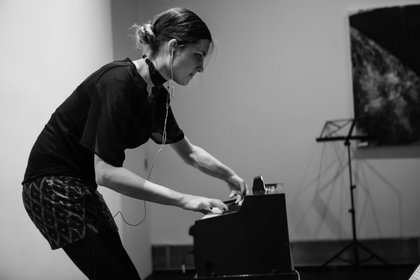Disability and Imagination
How Molly Joyce recasts disability
as a source for creative transformation
"I wish to recast disability from a fixed, static imperfection to that of a fluid, creative potential: a potential that is not concerned with able or disabled, formed or deformed, functional or non-functional, but rather all the in-betweens. In-betweens that lie within the pillars of possible and impossible, fixed and fluid, static and moving; and that emerge when we are not concerned with the ability of a body or the normality of a body but with the imaginary of a body."
- Molly Joyce, composer and musician, in TEDtalk below
|
There is much that we cannot change. We cannot change what has happened to us. We cannot change the laws of physics and chemistry. We cannot change our family of origin. We cannot change where we were born. And if we are physically impaired, many of us cannot change our bodies so that they conform perfectly to socially conditioned standards of what 'normal' is. Even if we wanted to, and even if those standards are themselves destructive and arbitrary, which so often they are. But we can change our way of understanding what has happened to us; and, in so doing, create new selves and even, in a way, new bodies: imaginary bodies. We can then dance these new bodies and sing them. And we can do this again and again, each day, moving beyond static images of perfection to what Molly Joyce calls "fluid, creative potential."
This ongoing movement, not always easy, is what process philosophers and theologians call creative transformation. Process theologians imagine the healing spirit at work in the world as a lure toward such transformation. Molly Joyce gives flesh and sound to this idea. The purpose of this page is to introduce process philosophers and theologians to her work and also to the work of one of her mentors, the pioneer in disability studies: Rosemary Garland-Thomson. They are testaments to what we believe and inspirations for our work. - Jay McDaniel, July 18, 2020 |

